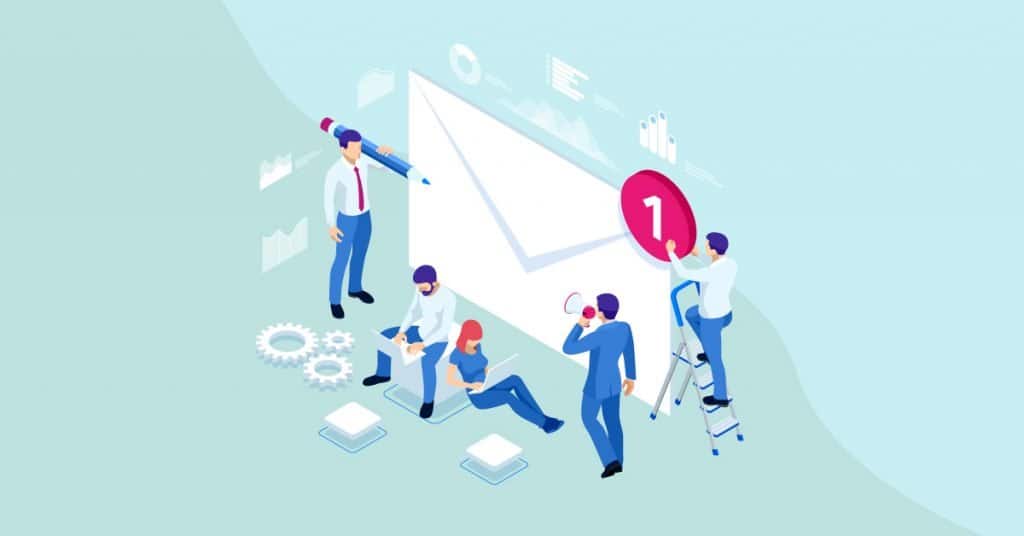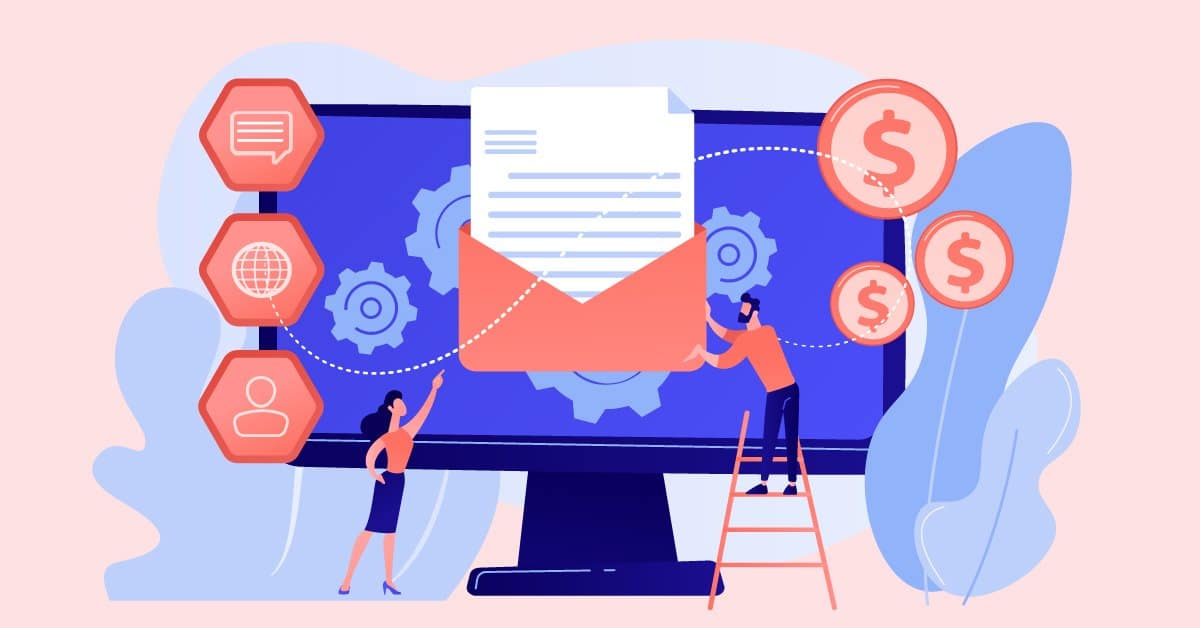What if you never had to send a welcome email again? What if all your regular emails were personalized and sent at exactly the right time, to the right people? Well, that’s email automation — and it’s one of the best parts of digital transformation.
If you’re curious about email automation, you’re in the right place. In this guide, we’ll explore seven different automated Shopify email campaigns, some of which are aimed at new customers and some of which are designed to encourage re-engagement. You can use these highly effective series to onboard new subscribers, nurture existing customers and tempt consumers back for more.
Email Marketing 101: What Is Email Automation?
Let’s begin with a thorough definition of email automation. Automated emails are personalized emails that get triggered when subscribers and customers take specific actions on your site. Here are just a few examples:
- When new customers buy products for the first time, you welcome them with onboarding emails.
- When customers place products in carts and then exit your site, they receive abandoned cart emails.
- When existing customers don’t visit your site for a while, they receive re-engagement emails.
So, how do you automate emails? In theory, you could set up in-house email marketing automation — but that would require a lot of coding. In practice, most SMBs connect their website analytics with an external email marketing platform — QDM, Klaviyo, Omnisend or MailChimp, for instance. Marketers target customers by demographics, spending habits, recent actions and so forth and send messages directly from the email marketing platform.
Are Marketing Email Templates Effective?
In a nutshell, yes. When they’re well written and tested for efficacy, marketing email templates work beautifully. Pre-made marketing email campaigns and email marketing apps can also save you a lot of time. You won’t need to spend hours perfecting copy — all you have to do is modify the template a little to match your brand.
It’s important to choose the right email series. Before you begin customizing, think about what you want to accomplish. Do you need to onboard new consumers, keep in touch with existing subscribers or coax former customers back into your online store?
Once you have the right campaign in front of you, add your logo, promotional images, CTA buttons and change the font if applicable. Then, modify the text to suit your needs. After that, it’s go time.

7 Essential Automated Shopify Email Campaigns
Without further ado, here are seven great email campaigns you can use to drive traffic to your Shopify store. You can use one, two or all of these series at once to raise revenue and grow your brand. We brought these campaigns into three sections: onboarding, nurturing and re-engagement.
Onboarding
Onboarding emails are the digital equivalent of “hello.” Here are two examples.
1. Welcome Email
Welcome email series help new subscribers get familiar with your brand. They’re friendly and they’re informative. According to research by CRO company Invesp, welcome emails have a 50% open rate — far higher than many other types of email. In contrast, only about 18% of promotional emails are ever read.
Welcome campaigns provide more than just a simple welcome. They also aim to convert subscribers into customers, educate recipients about your company and encourage a deeper connection.
Generally speaking, welcome email series contain three or four emails. Let’s see how a welcome campaign might look:
- Email 1: Welcome your new subscribers, introduce your brand and tell recipients why you’re the best in the business. Include enticing graphic links to products or helpful articles.
- Email 2: Provide an incentive to purchase — a coupon code, for instance. Tell readers about your shipping speeds and pricing model, and provide links to your social media accounts.
- Email 3: Send a product promo or highlight a recent blog post. Keep your tone casual and friendly — and don’t go the hard sale route.
2. New Customer
New customer emails are slightly different than new subscriber emails. New subscribers haven’t bought anything off you — yet — but new customers have. This email series is perhaps even more important than the welcome campaign above. After all, this is the beginning of a relationship between your company and a consumer.
If you can turn new customers into repeat customers, you’ll improve your revenue status in the long term. According to RJMetrics, repeat customers spend far more than new customers: in fact, their purchases account for more than 60% of profits at some companies.
Here’s how a new customer email series might flow:
- Email 1: Initial welcome emails must be sent right away. These emails include information about the customer’s order, shipping details and a general introduction to your company.
- Email 2: About three days later, send a follow-up email. Ask new customers for feedback and, if applicable, give them an order status update.
- Email 3: Send another message about two days after the customer’s estimated order arrival. Encourage shipping feedback and provide a review link.
Additional new customer emails might include special promotions or money-off coupons. Don’t bombard new customers with information, but do keep your company in the consumer’s line of sight.
Nurturing
Nurturing emails keep customers coming back for more. The following three series help customers feel special.
3. Standard Nurturing
All good relationships need a little TLC — and that’s what nurturing emails provide. Most consumers initially “window shop” sites and rarely buy anything when they first visit. Designed to guide consumers through your sales funnel, cleverly constructed nurturing campaigns increase conversion rate and boost your bottom line.
If you don’t create a nurturing email series, you could miss out on a very large proportion of potential sales. Marketing automation can save the day: all you need is the consumer’s email address — and you can grab that with a well-timed popup window.
Let’s take a look at a typical nurturing campaign:
- Email 1: Introduce recipients to your brand and tell them what makes your company different from the competition. Don’t get heavy-handed — stay cool and include something educational — a how-to guide, or information about your product, for instance.
- Email 2: Tell the next part of your brand story. Include a link to your blog, and weave your mission statement into the email content.
- Email 3: Get personal with a real-world customer testimonial, invite the recipient to your business social media accounts and include a coupon code.
4. Repeat Customer
We mentioned repeat customers above — they’re extremely important. According to a study by Episerver, 98% of consumers don’t buy anything at all on an initial site visit. In other words, if you base your business plan on instant conversions, you’ll probably fall flat. Instead, nurture leads and turn first-time buyers into repeat customers with a repeat customer email series.
People respond well to good ecommerce experiences. If they receive a good quality product on the double the first time they order, they’ll probably come back for more. Repeat customer emails aim to solidify that good feeling and turn it into brand loyalty.
Here’s what a repeat customer email series might look like:
- Email 1: Check in with customers a couple of days after their scheduled order arrival date. Ask them if their items arrived intact and encourage as much feedback as possible. You can use that data to build a better customer experience.
- Email 2: Send a few personalized product recommendations roughly four days after your initial repeat customer email. Include handy graphic links in case recipients want to shop right away.
5. Store Receipts
Ecommerce store receipts have a whopping 70% open rate. Consumers love to imagine receiving the products they buy, and receipts provide easy visual inspiration. If 7 in 10 customers open receipts, why not tack a few personalized product recommendations onto the end of your purchase content?
Other receipt-bulking options include special offers, shipping links, blog post links and social media sharing links.
Re-Engagement
Been a while? Use these great re-engagement emails to tempt your previous customers.
6. Standard Re-Engagement
Subscribers ignoring your emails? Existing customers not coming back as expected? Time to deploy a re-engagement email series. The goal of a re-engagement campaign is to win back a previous customer or subscriber, so they’re a little more urgent than other series. Most businesses begin to send re-engagement emails after 60 days of no customer activity.
Successful re-engagement campaigns have another purpose: they provide proof that people want to receive your emails. Google won’t flag your emails as spam if they maintain a good open rate.
Re-engagement email campaigns frequently go something like this:
- Email 1: Refresh recipients’ memories: remind them what your company is all about, and — if applicable — what they bought. Include a great discount coupon or a better-than-usual bundle offer to tempt them back.
- Email 2: Tell subscribers — in a friendly way — that you’ll remove them from your email list if they don’t engage or make a purchase. Remind them about the offer you sent in your last email.
- Email 3: Let recipients know that they’ve been removed from your list. Do remind them one more time about the special offer you included in your first email, and tell them how to resubscribe.
7. Abandoned Cart
Abandoned carts are common — and infuriating. In fact, nearly 70% of all shopping carts never make it to the end of the checkout. Thankfully, you can retrieve some of those lost sales via abandoned cart emails. The most effective abandoned cart series include several emails, each written from a slightly different angle.
Here’s how to reel those cart abandoners back in:
- Email 1: Send this email within 24 hours. Resist the temptation to send a discount code right away: instead, simply remind recipients about abandoned products. Include pictures for maximum visual impact.
- Email 2: Address any barriers to purchase about 48 hours after the initial cart abandonment. Provide answers to FAQs, make yourself accessible and ask for feedback.
- Email 3: At this stage, it’s okay to offer a discount code or free shipping. Create urgency with a time-limited special offer.
Some companies send four, five, six or even seven cart abandonment emails. For best results, keep an eye on your KPIs and adjust accordingly.
Shopify Email Marketing Best Practices
Well-designed marketing campaigns produce superior results. Generate sleek, elegant email series with these best practices:
- Create a great subject line. Beckon readers with a great hook. Recipients are far more likely to open emails that have interesting — and personalized — subject lines.
- Stay on topic. Write clearly and concisely, and go with a really obvious call to action. Include a CTA button to encourage readers to visit your site.
- Optimize for mobile. Is your email good to go? Send a test run to your smartphone to make sure text and graphics look great and flow properly on mobile devices.
- Check preheader text. Don’t forget to customize your preheader text to match your marketing email tone.
- Use a familiar “from” name. Use your brand name, rather than your own name, to ensure consumers know who the email is from.
Take Your Shopify Store To the Next Level With QDM
Automated emails make life much easier. If you want to learn more about email marketing automation or you’d like to make automation part of your marketing plan, contact QDM today. We’re marketing specialists with years of industry experience — we know how to leverage segmentation and create incredible email campaigns from scratch. Contact us to learn what we can do for you.
